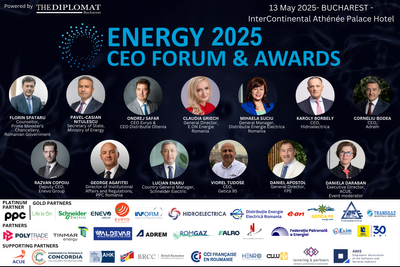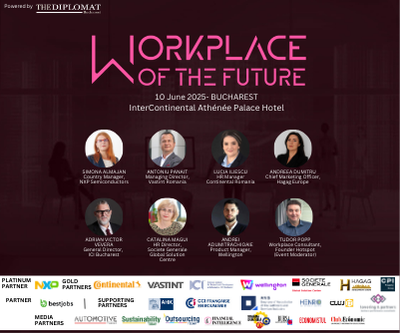The paradox of unoccupied office buildings – How to reduce service charge without affecting services

The state of emergency imposed by the current pandemic has led to almost total vacancy of office spaces, within the context of many of the employees working from home. The landlords want to lower service charge levels for this period and continue to provide the necessary services to maintain the buildings in optimal conditions, according to the real estate consultancy company CBRE, which manages a portfolio of over 7 million square meters of offices, commercial centers and industrial properties in Central and Eastern Europe.
The percentage of employees who need to come into the office has fallen with 90-95% of the total number of people, as companies have implemented work from home, excepting players in the media, IT, telecom or pharmaceutical industries.
“We are witnessing a paradox on the property management office market: considering the low levels of use during this period, the owners are thinking to reduce the operating costs of the building by 30-50%, but without affecting the services or endangering the jobs of the suppliers. Service charge cost efficiency, besides the proper tax, has two components: technical equipment and people. Regarding equipments, operating programs can be modified by turning on the saving mode or even partially turning off certain equipments that ensure the heating, ventilation or lighting of the spaces”, states Valeriu Toma, Deputy Head of Property Management, CBRE Romania.
As for the people who provide office building operating services, CBRE Property Management teams work closely with the suppliers in order to find the best solutions so that all employees are kept on payrolls, either through shorter shifts or reduced work hours or by providing stand-by teams to meet reactive needs.
“Both the landlords and the tenants wish to maintain the office spaces in optimal operating condition, so that their return to the office can occur in the best circumstances. The building is a living organism and needs to be properly cared for. The solutions implemented during the pandemic should not cause damage in the medium and long term. Reducing maintenance activities, whether we are talking about outdoor or indoor spaces, must be done strategically”, explains Valeriu Toma.
A set of measures that can optimize service charge are those related to gardening. These services must be maintained as they directly impact the image of the building, but their occurrence frequency can be limited depending on the area of the green spaces, the season and the weather conditions.
Another series of actions to lower the cost of operating offices is the external cleaning, such as the cleaning of the parking and of the relaxation spaces around the building, where the schedule of employees performing these activities can be shortened, proportional to the usage degree of the spaces. This also applies to the interior cleaning of the shared spaces of the building: the reception, the elevators, the toilets, the common halls and the stairs.
For example, when the building is not occupied by tenants, the weekend hours can be excluded, or the program for the staff providing cleaning may be reduced from 10-12 hours to 6-8 hours during the week.
The last category of cost-cutting measures is related to sensorial marketing which stimulate the olfactory and visual sense, such as flowers and perfumes from receptions or other shared spaces. Additionally, ambient music can be suspended.
As far as Facility Management activity is concerned, working hours can be reduced from 8-9 hours to 4-6 hours, provided that specialized maintenance services for all installations and equipment with a security role is still supplied, as well as for those related to the safety of the operation.
“All the measures to lower operational costs are taken as determined by the discussions with the tenants in order to avoid a negative psychological impact on those who work in the building. More than ever before, communication between owners and tenants is essential during this period and the return to work in large numbers of employees is already operationally set up, owing to the information received from the tenants,” concludes Valeriu Toma.
There are 3.2 million square meters of modern offices in Bucharest, where, in normal circumstances, between 260,000 and 400,000 employees are working. For all these spaces, the service charge or the tax on services that the renting companies pay additional to the rent can range between 3.5 and 4.85 euros / sqm / month, according to the Bucharest Service Charge report, conducted by CBRE Research.
In Romania, the property management department of CBRE was established at the end of 2013 and currently exceeds 800,000 sqm, including Timpuri Noi Square office buildings, Aviatorilor 8, Floreasca Business Park, Lakeview, Green Gate, Campus 6.1, myhive Metroffice, myhive S-Park, Victoria Park or Iride platform and multiple shopping centers in Bucharest and regional cities.
Apart from the Romanian department, CBRE relies on the support of a large number of property management specialists from the company’s subsidiaries located in the Central and Eastern Europe region, accounting for almost 600 consultants. Currently, CBRE manages a portfolio of 7 million square meters in Central and Eastern Europe, of which over 2.5 million square meters are office buildings.
















